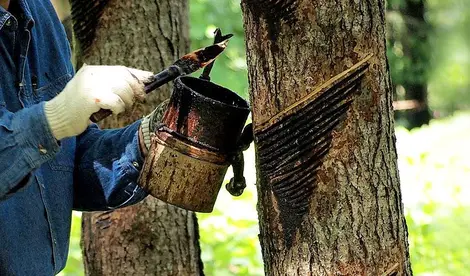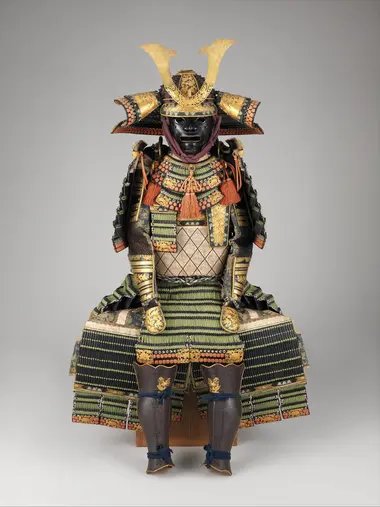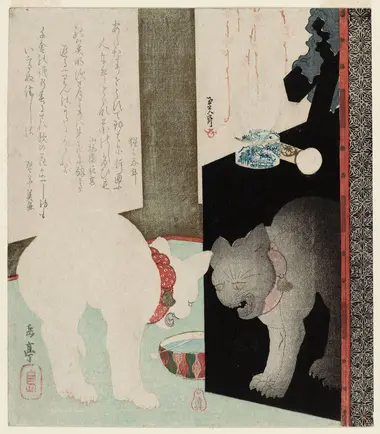Urushi, japanese lacquerware 漆
- Published on : 17/01/2020
- by : S.V.
- Youtube
Luxury, lacquer and pleasure
"The Japanese excel in this art to the highest degree, because they are extremely skilled at giving a lacquer object the appearance of being made of shiny ivory"
- Joao Rodrigues, Portuguese Jesuit missionary of the sixteenth century.

Lacquer object from the city of Wajima
JNTO
An expensive raw material
Urushi (lacquer) is made using the sap from the rhus vernicifera, Japanese lacquer tree, which is only grown in the Far East and Southeast Asia. To harvested the sap, incisions are made in the tree's bark. The raw lacquer is a viscous white-grayish liquid and it is only after a series of processes (filtering, homogenization and dehydration) that it becomes transparent. The lacquer can then be tinted black, red, yellow, green or brown, ready to be applied. Once applied, it is dried under very precise conditions: a temperature between 25 and 30°C and a humidity between 75 and 80%. Due to its harvest and its extremely technical process, urushi items are very expensive.
Ancient use
The urushi technique has been used in Japan since protohistoric times, around 5000 BC, to protect and waterproof wooden and terracotta tools and utensils. But from the ninth century, there were two distinct uses: firstly, the lacquer was used to protect and decorate objects of another material (wood, metal...) and secondly, it is used to create clean objects, provided with a fine frame of wood, fabric or leather. They require more than thirty processes to be created, as well as incredible meticulousness! Due to its protective quality, urushi is the ideal coating for furniture and tableware. Lacquer also has the advantage of insulating the item from heat and protecting food. But beyond this practicality, lacquer is a material offering many decorative possibilities, and for this reason it became popular with the nobility.
Read: The Shunkei Lacquer Museum in Takayama
A pinch of gold powder
A decorative technique called maki-e, offering many opportunities decor, spread rapidly from the eighth century. It consists of the application of fine particles of gold and silver, inlays of mother-of-pearl (raden) or tin and the spraying of gold, silver or copper flakes onto the still-damp lacquer. These very high-quality lacquers are of exceptional beauty. Their reputation was so high, that pieces were exported to Europe by Portuguese traders in Nagasaki in the second half of the sixteenth-century. Because of this, Japanese lacquers are mentioned in the 1560 inventory of the collections of King Francis I of France! Two centuries later, Queen Marie-Antoinette acquired a remarkable collection and had a "lacquer cage" built by the cabinet maker Jean-Henri Riesener in 1781, intended to house her precious Japanese lacquers in Versailles.
Always more lacquers
Thanks to the social transformations of the Edo era (1603-1868), lacquer became accessible to all; even at the lowest social classes. Therefore, the use of urushi was no longer reserved for the religious or warrior elites. The creation of new production centers throughout the country, and consequently a greater variety of objects, made lacquer products accessible for all. Japanese interiors flourished and many households had lacquered objects such as incense boxes, document boxes, writing cases, smoking utensils, inro, etc. In addition to everyday objects, lacquer continued to adorn prestigious furniture and battle accessories such as armor, helmets, masks, scabbards, leggings and arm guards.
To learn more...
To admire Japanese lacquerware, you can go to the major national museums. The National Museum of Tokyo and the National Museum of Kyoto house some wonderful pieces. Japan also has some museums entirely dedicated to urushi. If you want to learn more about this subtle art, we recommend that you visit the Shunkei Lacquer Museum in Takayama, or the Urushi Museum in Nikko.
Finally, the Wajima Museum of Lacquer (Urushi) Art and the Wajima Shikki Kaikan exhibit high-quality lacquerware produced in Wajima since the second half of the Edo period. If you want to buy lacquered boxes, bowls or bento boxes, it's good to know the most famous shops of the capital: Kuroeya in Nihonbashi and Heiando, the official supplier of lacquerware for the Imperial Palace since 1919.
Feeling creative? Two workshops in Kanazawa offer introductory workshops for learning the maki-e technique: the Nosaku workshop and the Kyoka Gallery. For 60 or 90 minutes, you can learn the technique and create your own piece of art.





















